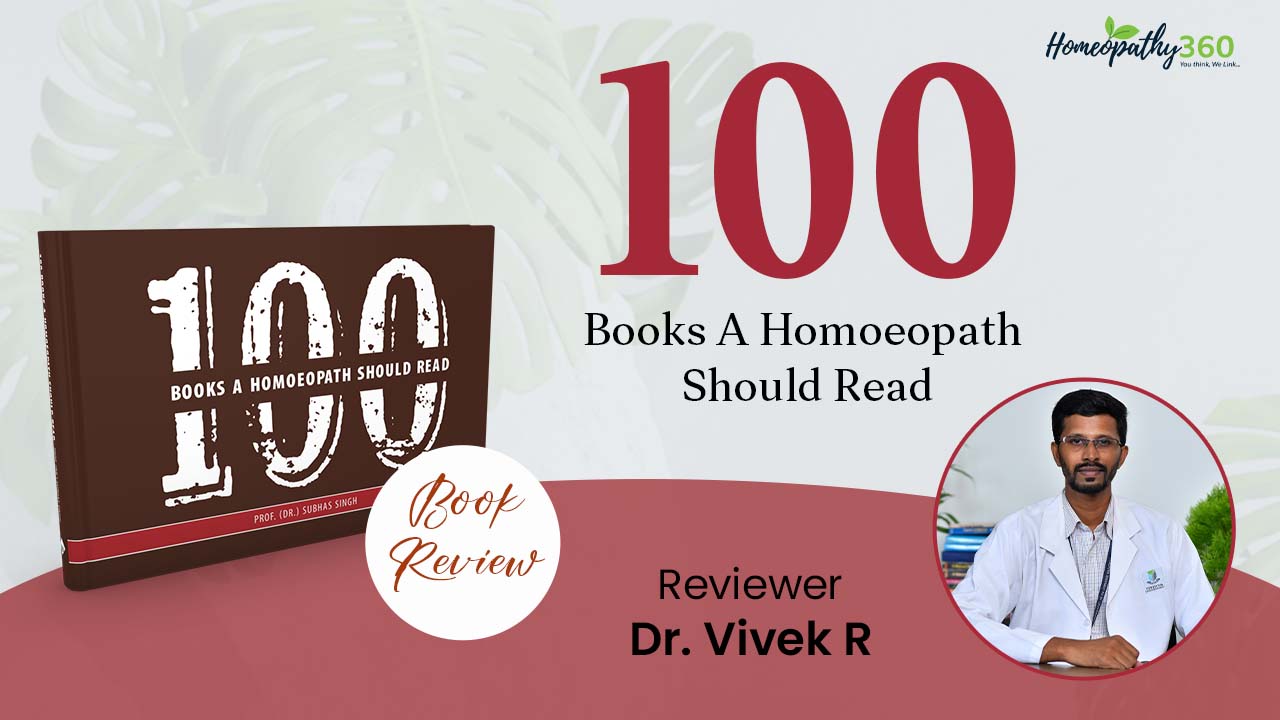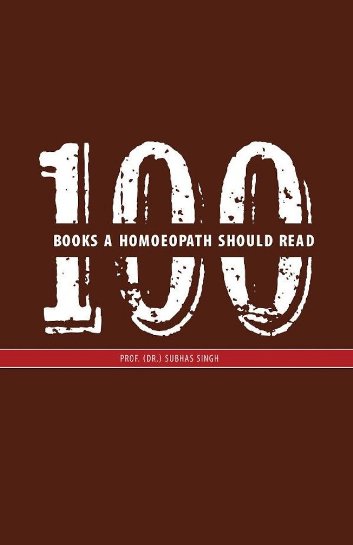
“But this laborious, sometimes very laborious, search for and selection of the homoeopathic remedy …, is an operation which, notwithstanding all the admirable books for facilitating it, still demands the study of the original sources themselves…”
– Dr Samuel Hahnemann, in F.N. to Aphorism 149, Organon of Medicine.
Hahnemann asserts the value of books through this sentence. But in the current era of AI and literature abundance, every Homoeopathic Student is apt to feel confused and think “There are mountains of Books in Homoeopathy. Where should I start? What should I read now?” Also, there are some books with attractive but unscientific theories, which again may divert a sincere reader in the wrong direction.
The solution for these problems is given by Prof. Dr. Subhas Singh in the form of a book titled “100 Books a Homoeopath Should Read”.
Prof. Dr. Subhas Singh is a renowned Homoeopath who has enormous experience in the field as a Physician, a Teacher, an Academician and a Researcher. He has made a great effort to hand-pick 100 titles, after a thorough study of a large number of books in Homoeopathy. He acknowledges that this is not a complete list of good books available, but only the best among them that will aid any learner to build a strong foundation in the science of Homoeopathy.
The presentation of the book is simple and well structured, making it easy for reference. The books are grouped under seven categories, namely
- Organon of Medicine & Homoeopathic Philosophy
- Homoeopathic Materia Medica
- Repertory
- Homoeopathic Therapeutics
- History of Homoeopathy
- Lesser/ Collected Writings
- Booklets
This categorization effectively enables the reader, to understand the basic nature of any book and also to refer easily at times of need. By adding a separate section on Lesser writings and Booklets, the author has made sure that no minor texts are missed from the list due to the small volume of text. Under these categories information about each book is given in two sections –
- Specially chosen details about the author and a portrait – on the Left side
- A Short description of the book – on the Right side.
The first section is not a routine biography of the stalwarts but meticulously chosen details from each author’s life and their contributions. This section is a unique attraction of this book. Knowing “What kind of person is writing?” adds another bit of inspiration to read their work. An excerpt from the description about R E Dudgeon is as follows ”His one of the greatest fights was the fight against the Draft Medical Bill of 1858, in which the allopaths wanted to regulate the affairs of medical colleges to reject candidates who had any connection or leaning towards Homoeopath.” In another paragraph he mentions “Other than Homoeopathy, he is also known as discoverer of diving glasses and pocket sphygmograph.”
In the second section, the details of each book are given in the following format,
- Title of the Book,
- Author’s Full Name and/or Contributors and Editors,
- Year of Publication,
- Number of Pages(and Volumes),
- A concise description of the Book.
A lucid description of the specialities of each book is given by Prof. Dr. Subhas Singh. The given Suggestions based on his personal experiences are sure to help the reader approach the book in a better way. For example, while describing Clinical Materia Medica by E A Farrington he adds “The 8 pages “Introductory” should not be overlooked because it discusses the importance and types of relationship and how to study Materia Medica…”
The author hasn’t shunned adding recent books that are in line with the basic principles of Homoeopathy. Books published from times of Hahnemann to the recent past are included. Books by Boenninghausen, James Tyler Kent, Mahendra Singh, Dana Ullman, Frederick Schroyens, George Vithoulkas, etc are detailed.
In conclusion, this book is a must-have for all Learners, for it is like a guiding star to both beginners and experts alike, enabling the reader to travel confidently in the right direction of Homoeopathy. I consider it my privilege to pen down my review of this book. Happy reading!
A Book Review of “100 Books A Homoeopath Should Read” By Dr Vivek R Md (Hom)
Title: 100 Books a Homoeopath Should Read
Author: PROF. (DR.) SUBHAS SINGH
ISBN: 9788131963944
Imprint: B Jain Regular
Pages: 247
Format: Paperback
Language: English
Dr Vivek R MD(Hom),
Associate Professor,
Department of Organon of Medicine with Homoeopathic Philosophy,
Yenepoya Homoeopathic Medical College and Hospital,
Yenepoya (Deemed to be University),
Mangaluru, Karnataka.





